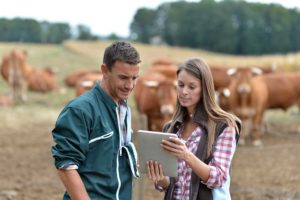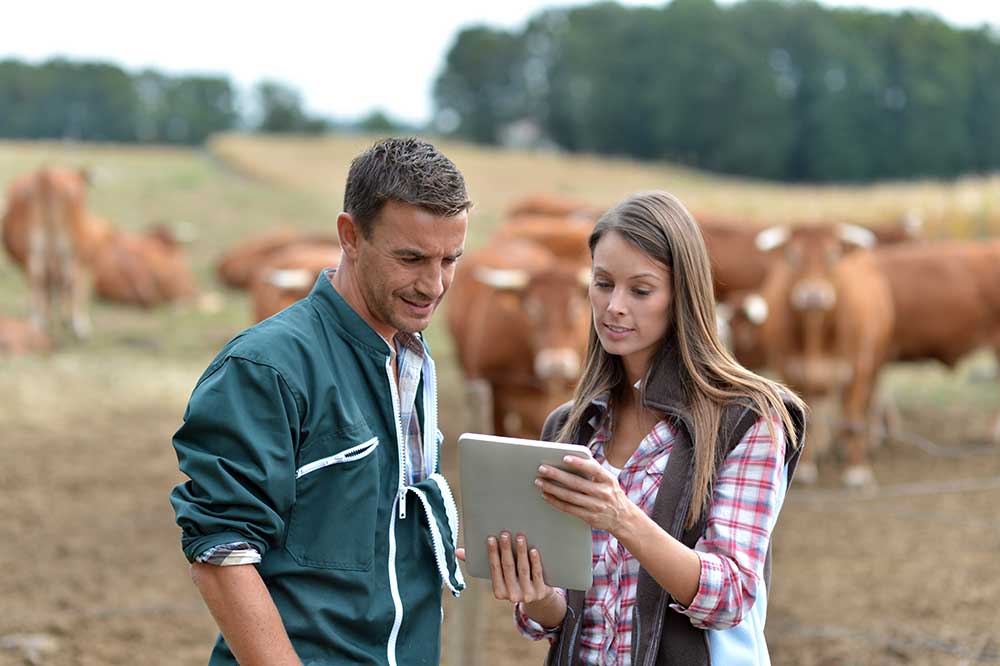Disclaimer: The information on our website is provided for general information purposes only. We make no representations or warranties of any kind, express or implied, about the completeness, accuracy, reliability, suitability or availability with respect to the website or the information contained on our website for any purpose. Any reliance on such information is therefore strictly at your own risk and we are not liable for any damages or losses arising out of or resulting from your reliance on any information contained on our website.
A farmer or rancher operate farms that produce livestock or crops. In fact, they produce enough crops and livestock for private sales or to for wholesale to companies. About 7 in 10 farmers and ranchers are self-employed and many work on family-owned farms. However, this is no ordinary work week as these people work hours that are determined by a farm’s needs. Watch a video to learn what a farmer or rancher does:
How to Become a Farmer or Rancher

Farmers and ranchers typically have a high school diploma and obtain their skills through work experience. Work experience is usually gained through growing up on a farm or working under experienced farmers. Because of this industry’s complexities and costs, farmers and ranchers increasingly are pursuing postsecondary education. An associates degree or bachelor’s degree in agriculture or related field is how some people become a farmer.
Farmers and ranchers can gain an education in farming through several government programs. All state university systems offer a minimum of one land-grant college or university with a school of agriculture. These programs have courses in plant breeding, agronomy, business (with a concentration in agriculture), farm management, agricultural economics, and dairy science.
Job Description of a Farmer or Rancher
Farmers and ranchers oversee and contribute to every step of the ranging process and crop production to include herding, planting, harvesting, and fertilizing. They purchase farm machinery, seed, fertilizers, and other supplies and ensure machinery and equipment are in good repair and well-maintained. They must also keep the farm facilities (like fences, hoses, pipes, and animal shelters) in good working order. He or she must be flexible and able to adapt to weather conditions, seasons, or a crop’s growing cycle.
Free Student and Teacher Resources
To learn more about farming, you can also check out the National Young Farmers Coalition website. Wageningen University also offers a free course on EdX.org titled Sustainable Food Security: The value of systems thinking. Additionally, there is an option to pay a small fee to receive a verified certificate upon completion.
Agricultural Workers Career Video Transcript
Agricultural workers need physical strength and stamina to keep up with their tasks, but they also need technical skills and strong teamwork. These workers maintain crops and tend to livestock, under the supervision of farmers and ranchers. Although some agricultural workers do all types of work around a farm, many focus on a few tasks. Agricultural equipment operators use tractors, combines, conveyor belts, and other farm equipment to plow and sow seeds, then maintain and harvest crops. They also perform minor repairs on the equipment. Crop, nursery, and greenhouse farmworkers and laborers grow fruit, nuts, trees, flowers, and other crops through every phase from planting and pruning, to harvesting and loading for shipment.
Farm and ranch animal farmworkers feed and care for animals, including cattle, pigs, goats, fish, and bees. They monitor their health, clean shelters, and administer medications or insecticides. Animal breeders select and breed animals to produce offspring with desired characteristics, such as chickens that lay more eggs. Some raise cats, dogs, and other pets. Many agricultural workers have seasonal schedules, with longer hours during planting or harvesting times.
The work is nearly all outdoors in all kinds of weather, and involves lifting, crouching, and carrying heavy tools. Risks include exposure to pesticides, and injury from farm machinery or farm animals. Typically, specific education is not required, and on-the-job training is provided. Animal breeders need a high school diploma or equivalent, and must be licensed in some states. A valid driver’s license is required for some jobs.
Article Citations
Bureau of Labor Statistics, U.S. Department of Labor, Occupational Outlook Handbook, Farmers, Ranchers, and Other Agricultural Managers.
National Center for O*NET Development. 11-9013.02. O*NET OnLine. This page includes information from O*NET OnLine by the U.S. Department of Labor, Employment and Training Administration (USDOL/ETA). Used under the CC BY 4.0 license. O*NET® is a trademark of USDOL/ETA. RethinkOldSchool, Inc. has modified all or some of this information. USDOL/ETA has not approved, endorsed, or tested these modifications.
The career video is in the public domain from the U. S. Department of Labor, Employment and Training Administration.

